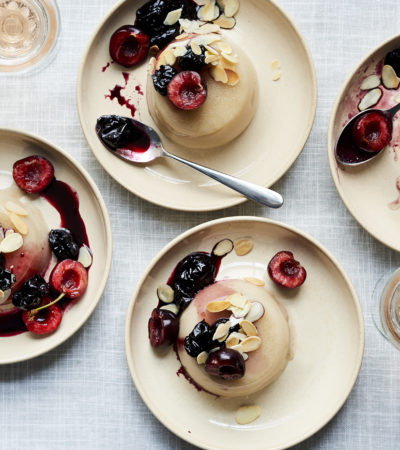It’s amazing how skin can affect your mood and your confidence, both positively and negatively. It’s all sunshine and rainbows when your complexion is playing game, but when it’s not, it can really knock you down. Luckily, here at Hip & Healthy, we have amazing access to experts in all industries of wellbeing so we can help inform you on ways to battle things like problematic skin. Today, we’ve got Holistic Therapist and Facialist, Katie White, to shed light on the power of food for healing your skin.
As a skincare specialist and nutritional therapist I am always delighted to see how amazing food in therapeutic use can be in terms of improving the skin’s condition and even eradicating long term issues such as eczema and acne.
First things first, with any skincare complaint you need to look at your gut and liver health. Your gut health influences every system in your body and a healthy gut is paramount for eliminating toxins, hormones and waste. If you are suffering from any skin issues, my advice is work from the inside out, starting with your tummy; whether that means keeping a food diary to see if any foods are causing bloating and discomfort or introducing a good probiotic if you have had prolonged antibiotic use in the past, it is the starting point of seeing good results.
In terms of foods to support digestion and detoxification, make sure you are getting lots of fibre rich foods such as beans, pulses, berries and oats. Include at least 2 portions of cruciferous vegetables such as spinach, cauliflower, broccoli and sprouts with lunch, dinner and even breakfast such as a handful of spinach in your smoothie. Introduce bitter foods to promote digestive enzymes such as rocket, chicory, artichoke and citrus fruits. If you have had any gut trauma (IBS, reflux, etc..) you can even include healing compounds such as chamomile, marshmallow and calendula teas and kefir.
I would also recommend cutting out dairy, sugar and refined carbohydrates such as bread and pasta at least for 6 weeks to see if this improves any skin complaints.
Second – but equally as important – is hormone balancing. Listen to your body. Have you noticed any changes? Do you suffer each month? Have irregular periods? Have debilitating cramps or breast tenderness? There is so much you can do in terms of diet to balance hormones which will improve your monthly struggle and in turn your skin.
I’m not going to give any blanket advice here as hormones are a little tricky and I would suggest seeing a practitioner for a protocol designed for you.
Acne
Acne is the worst, whether you have had it since your teens or it’s adult onset acne, it’s an absolute nightmare. A nightmare that is often accompanied by some very questionable solutions from skincare brands and GPs such as roaccutane and super strong topical creams that weaken skin where strength is already impaired. Here are some of the top nutrients to support acne prone skin:
Vitamin A for regulation of sebum production, normalisation of blood flow and increased rate of wound healing.
Top sources: carrots, papaya, sweet potato, spinach, kale
Vitamin C to fight infection, reduce scarring, redness and inflammation.
Top sources: bell peppers, dark green leafy veg, kiwis, broccoli, berries, tomatoes, peas and of course, citrus fruits
Zinc to reduce excess oil production, regulate androgens (male hormones as elevated levels can be one cause for acne) and amazing for wound healing.
Top sources: sesame seeds, pumpkin seeds, lentils, legumes, cashews, prawns, quinoa
Omega 3 fatty acids which are amazing anti-inflammatories and reduce redness and swelling of cystic spots.
Top sources: flax seeds and flaxseed oil, walnuts, salmon, tofu, prawns, cauliflower
Rosacea
Rosacea, characterised by redness and flushing, but can often include blemishes and bumps as well which can be triggered by a variety of different factors such as temperature, spicy food, alcohol, stress and recent studies have shown strong links between gut health and rosacea. Here are some top nutrients to reduce rosacea flare ups:
Essential fatty acids to reduce the inflammatory aspects of rosacea such as the redness and any spots or bumps that may be present.
Top sources: almonds, eggs, olive oil, whole grains, dark green leafy veg
B vitamins maintain day to day functionality of the skin by enhancing permeation of blood, and therefore oxygen and nutrients, to skin to keep skin cells fresh and healthy.
Top sources: chicken, fish, nuts, seeds, dark green leafy veg, avocado, mushrooms, peas, lentils
Probiotic bacteria – there have been some links between overgrowth bad bacteria in the small intestine and rosacea; one of the best ways to regulate this is via good bacteria found in food sources.
Top sources: yogurt, miso soup, sauerkraut, kefir, kombucha, kimchi, tempeh, red onions, apple cider vinegar
Eczema
Eczema is a very common condition, not only among children and teens, but also adults and once again can have a variety of different triggers such as allergies to either food or exterior stimulants such as dust or animal dander. For persistent eczema, possibly accompanied with other atopic reactions such as asthma or hay fever, I would suggest researching a low histamine diet.
Top nutrients for eczema include essential fatty acids and B vitamins as before and also fat soluble antioxidants.
Fat soluble antioxidants such as carotenoids and flavonoids deliver localised antioxidant activity to inflamed areas. Some aspect of the inflammation associated with an eczema flare up is linked to free radical activity so the antioxidants help to buffer this reaction and therefore reduce inflammation, redness and heat.
Top sources: carrots, tomatoes, pumpkin, kale, spinach, sweet potato, collards, apricots, blueberries, strawberries
Psoriasis
Psoriasis is a little bit different to the conditions we have already looked at. Psoriasis is a long-lasting autoimmune condition that speeds up skin cell turnover and has no definitive cure, however, it can be treated and managed.
Essential Fatty Acids once again are great at reducing the inflammation associated with psoriasis.
The other benefit of Essential Fatty Acids in psoriasis is their ability to help the skin maintain moisture which reduces the appearance of dry, flaky skin associated with psoriasis.
Quercetin has been found to inhibit an enzyme in the body called phospholipase which is involved in the formation of arachidonic acid. By inhibiting arachidonic acid, the presence of pro-inflammatory factors are reduced and therefore there are fewer inflammatory skin lesions.
Top sources: apples, red onions, peppers, tomatoes, cruciferous veg, citrus fruits.
B vitamins, as we have seen, are great for maintaining skin health. In psoriasis, B9 or folate, is particularly effective as it is directly associated with regulating skin cell turn over and building and repairing skin cells.
Top sources: chickpeas, beetroot, asparagus, lentils, chickpeas, avocado, spinach
I hope these tips are useful for any of you suffering from the above complaints
For any further information on any of the above issues or any other skin issues please don’t hesitate to get in touch with me directly.
Katie x
Insta: @relaxldn
website: www.relax-ldn.com
Email: [email protected]














